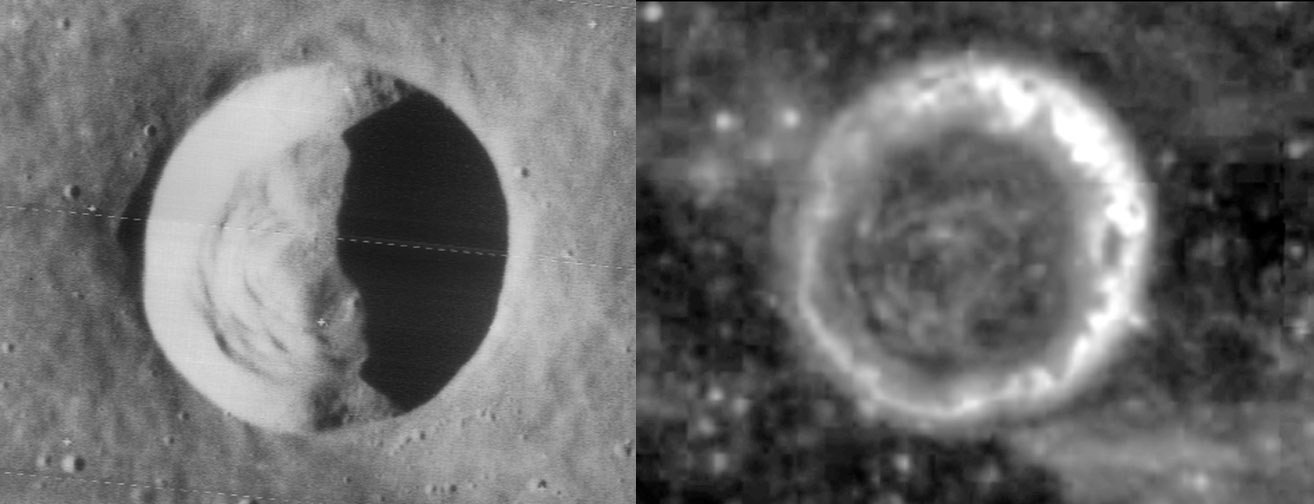Difference between revisions of "May 31, 2018"
| Line 12: | Line 12: | ||
<br /> | <br /> | ||
<strong>Related Links</strong><br /> | <strong>Related Links</strong><br /> | ||
| − | Rükl plate [https://the-moon.us/wiki/ | + | Rükl plate [https://the-moon.us/wiki/Rükl_28 28]<br /> |
<br /> | <br /> | ||
<p><b>Yesterday's LPOD:</b> [[May 30, 2018|Happy Valentines Day]] </p> | <p><b>Yesterday's LPOD:</b> [[May 30, 2018|Happy Valentines Day]] </p> | ||
Revision as of 20:55, 18 August 2018
Happy B-Day, Galileo
Originally published February 15, 2009

LO IV and Clementine images from USGS Map-A-Planet
Other than the beautiful oblique view from Lunar Orbiter III (and the standard Lunar Orbiter IV image) there seems to be no great spacecraft or terrestrial image of the crater honoring the father of astronomy, Galileo Galilei. It is ironic that the person who first studied the Moon scientifically has had his lunar namesake ignored. The crater is 15 km wide, and probably formed as a standard bowl with a small flat floor. But the LO IV image shows that material has slid down the rim, accumulating into a wreath of debris at the edge of the floor. This interpretation seems straight-forward but the Clementine high Sun image really looks like a different crater. It's not though. The slump mounds on the floor are nearly indistinguishable from the small flat spot so that the only thing that shows up in Clementine's albedo image is boundaries of the mounds. Although too late for Galileo's 445th birthday - today - it would be lovely if a high quality image of his crater became available soon.
Chuck Wood
Related Links
Rükl plate 28
Yesterday's LPOD: Happy Valentines Day
Tomorrow's LPOD: 14 Rilles, not Counting Gassendi
COMMENTS?
Register, Log in, and join in the comments.



